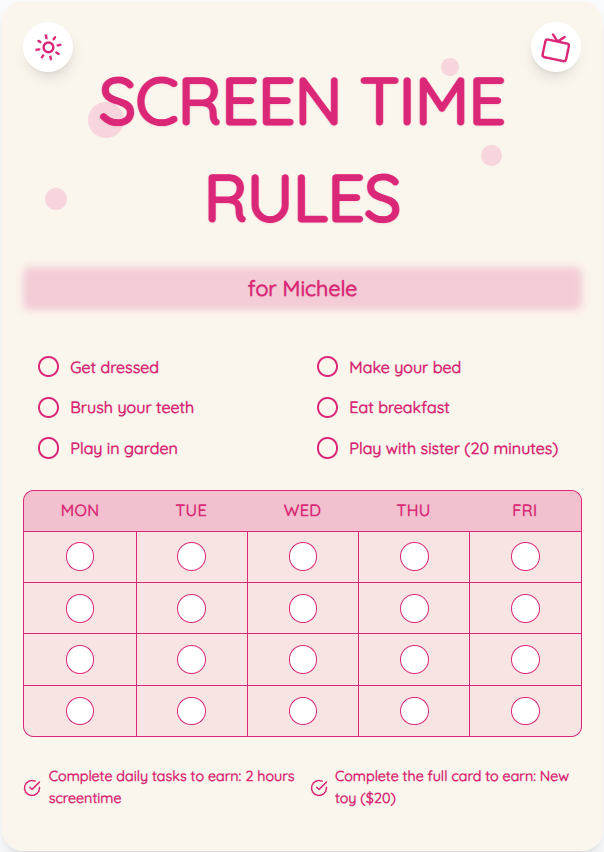Screen Time Guidelines by WHO: Your Essential Parenting Resource
As a parent navigating the digital age, understanding and implementing screen time guidelines set by the World Health Organization (WHO) can significantly impact your child's development. In this comprehensive guide, we break down WHO's recommendations and provide practical tips to help you manage screen time effectively for children aged 2-12.
See What Your Screen Time Chart Will Look Like
Here's an example of a beautiful, customizable screen time rules chart you can create for your family

Understanding WHO's Screen Time Guidelines
WHO recommends no screen time for children under one year and limited screen time for children aged 2-4. For children aged 5-12, screen time should be limited to 1 hour of high-quality content per day. It is crucial to balance screen time with physical activity, sleep, and other healthy behaviors to promote overall well-being.
Practical Tips for Managing Screen Time
1. Create a family screen time schedule and stick to it. 2. Encourage outdoor play and other non-screen activities. 3. Use screen time charts to visually represent limits and expectations. 4. Be a role model by demonstrating healthy tech habits yourself.
Put These Tips Into Action
Create a custom chart to implement these strategies with your child
Setting Boundaries and Consistency
Consistency is key when it comes to managing screen time. Establish clear rules and consequences for excessive screen time use. Monitor your child's online activities and have open conversations about responsible digital behavior.
Practical Tips for Success
- Create a designated 'tech-free' zone in your home.
- Encourage offline hobbies like reading, art, or sports.
- Use parental control settings to limit access to inappropriate content.
- Engage in screen time activities together to foster bonding.
Frequently Asked Questions
How can I determine the appropriate amount of screen time for my child?
Consider factors like age, developmental stage, and individual needs. Follow WHO guidelines as a general reference and adjust based on your child's behavior and well-being.
Are educational apps and programs considered beneficial screen time?
While some educational content can be valuable, moderation is key. Ensure that screen time is balanced with hands-on learning experiences and social interactions.
How do I handle resistance from my child when setting screen time limits?
Communicate openly about the reasons behind screen time limits. Involve your child in creating the family screen time rules to foster a sense of ownership and responsibility.
By following WHO's screen time guidelines and implementing practical tips, you can create a healthy tech environment for your child. Remember, moderation and balance are essential for promoting positive screen time habits. Visit ScreenTimeRules.com to generate personalized screen time charts and start managing screen time effectively today.
Ready to Transform Your Family's Screen Time?
Join thousands of parents who have successfully managed screen time with our customizable charts.
